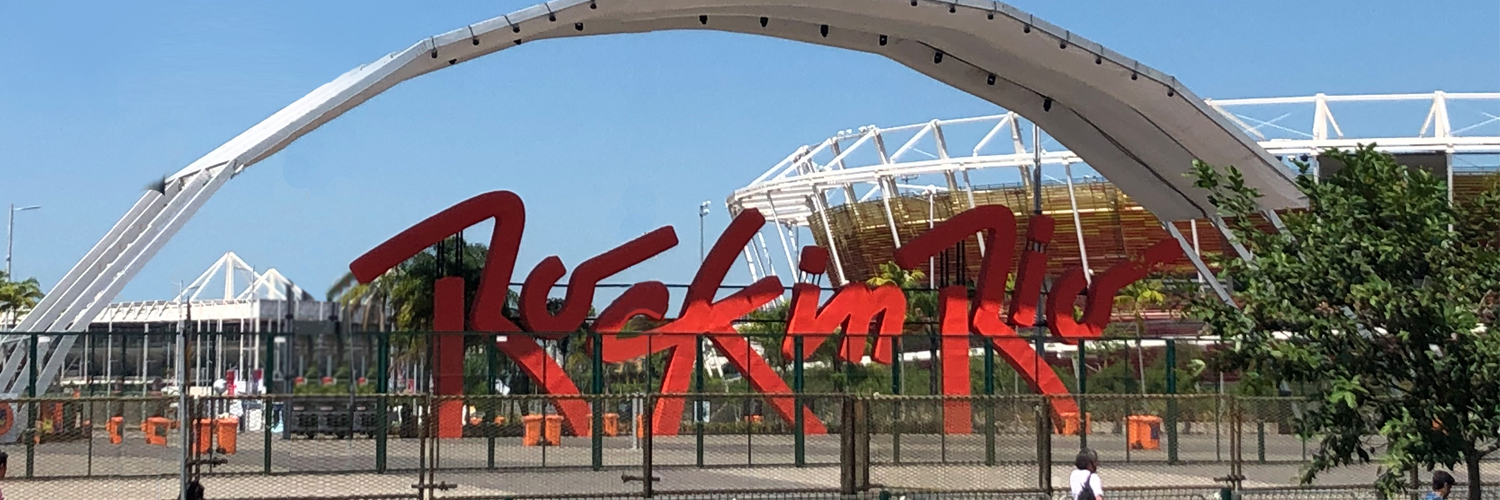Rock in Rio, one of the largest music festivals in the world, with over a million people attending, was broadcast live over the ISDB-Tb terrestrial TV service, HLS streaming and 5G using MPEG-H Audio, as recently adopted by the SBTVD (Sistema Brasileiro de Televisão Digital / Brazilian Digital Television System) Forum to increase the attractiveness of the services. It was the first live end-to-end broadcast using MPEG-H Audio in Brazil.
Globo, the largest media group in Brazil, successfully used MPEG-H Audio for a live broadcast over the enhanced ISDB-Tb system during one of the world’s biggest music festivals, Rock in Rio. Using the MPEG-H Audio format, the musical performances on the two main stages, “Mundo” and “Sunset,” were delivered over the air with immersive and personalized sound in the Rio de Janeiro area. In addition, an enhanced video quality was provided using Advanced HDR by Technicolor, which is currently under consideration for adoption in the SBTVD Forum.
With MPEG-H Audio, the viewers were able to experience the concerts as if they were present at the venue and moreover had the opportunity to interact with the audio content and personalize it. During the seven days of Rock in Rio, the public was able to experience MPEG‑H immersive sound and its advanced personalization options using tablets and binaural rendering over headphones at the Globo and Globoplay booths at the festival venue. In the offices of Globosat, Fraunhofer demonstrated the ease of use of MPEG-H, bringing immersive sound into any living room with the MPEG-H-enabled Sennheiser Ambeo soundbar, which offers studio-grade sound quality.
The immersive mix using 5.1 surround plus four height channels was produced by Globosat sound engineers. Additionally, Globosat made available several mono and stereo stems for ambience, instruments or vocals. Fraunhofer sound engineers used these stems to enrich the live mix with audio objects, enabling personalization of the user experience by enhancing the level of the ambience or moving the vocals into the height loudspeaker layer. Besides immersive audio, personalization is one of the key features of MPEG-H Audio to dramatically improve the attractiveness of a service.
The same MPEG-H Audio production was simultaneously delivered over multiple distribution platforms. Besides the ISDB-Tb terrestrial broadcast, an HLS streaming service using MPEG‑H Audio was offered, with commercially available LG TV sets playing back the MPEG-H Audio stream. And with the support of Rohde & Schwarz, MPEG-H Audio was embedded in an experimental broadcasting UHF channel for the first 5G broadcast transmission field test in Brazil. ATEME’s TITAN Live encoder created all three services in parallel. According to the SBTVD specification, the ISDB‑Tb service also contained an HE-AAC audio stream, which was used for legacy receiving devices, while the MPEG‑H audio stream could be consumed with MPEG-H-enabled receivers and soundbars.
“It was an amazing experience for us to work with Globo during Rock in Rio for setting up the first live end-to-end broadcast using MPEG-H Audio in Brazil. The complexity of such major events is really impressive. We are very happy that we could show the capabilities and advantages of MPEG-H and at the same time demonstrate how easy it is to integrate MPEG‑H Audio into such a setup. This major achievement represents only the beginning of our long-term commitment to supporting Globo and the Brazilian media industry in using MPEG-H Audio in their regular services,” says Adrian Murtaza, Senior Manager Technology and Standards at Fraunhofer IIS.
“It was a remarkable achievement. During the Rock in Rio 2019 event, we were able to deliver audio and video contents in the highest quality, including personalized immersive sound and HDR video, over the air in backward compatible mode. Everything was done in an efficient and massive way based on new features of the enhanced ISDB-Tb, our current free to air television system. Also, all these premium contents were distributed through terrestrial 5G broadcast in an experimental UHF channel, which is part of our strategy and investigations towards the next generation TV,” says Leonardo Chaves, Head of New Transmission Technologies at Globo.
Header image © Adrian Murtaza – Fraunhofer IIS

